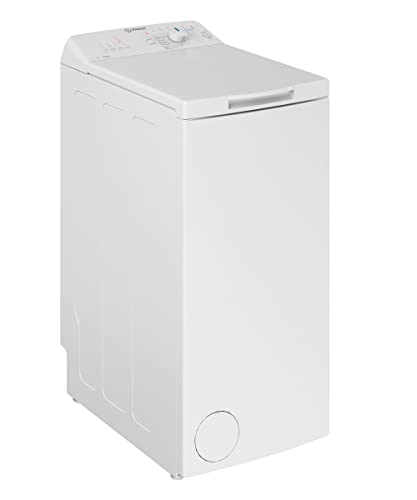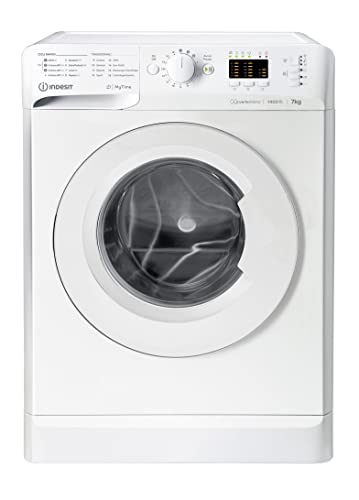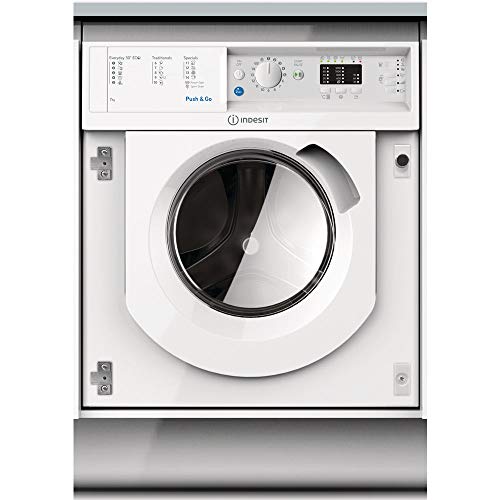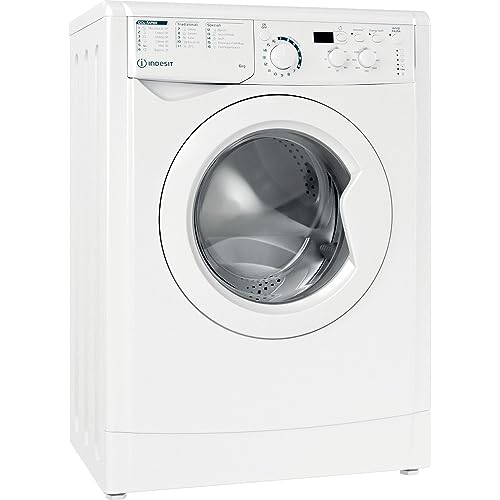Are Indesit washing machines good?
Indesit washing machines rank #21 among all washing machine brands, with an overall score of 5.7. The average user rating for Indesit is 8 points, placing it at #15 in the user preference rankings.
Indesit is not among the best washing machine brands. We recommend considering washing machines from brands like Samsung, Miele, or LG.
(The ranking considered 22 brands, excluding those with fewer than 6 products.)
The best washing machine brands are ranked based on their overall scores as follows.
[horizontal-chart-39866564]
The best Indesit washing machines are as follows.
- Indesit BTW L50300 (Overall score: 5.58 points; Capacity: 5 kg)
- Indesit EWE 81284 W IT (Overall score: 6.64 points; Capacity: 8 kg)
- Indesit MTWE 91285 My Time (Overall score: 6.5 points; Capacity: 9 kg)
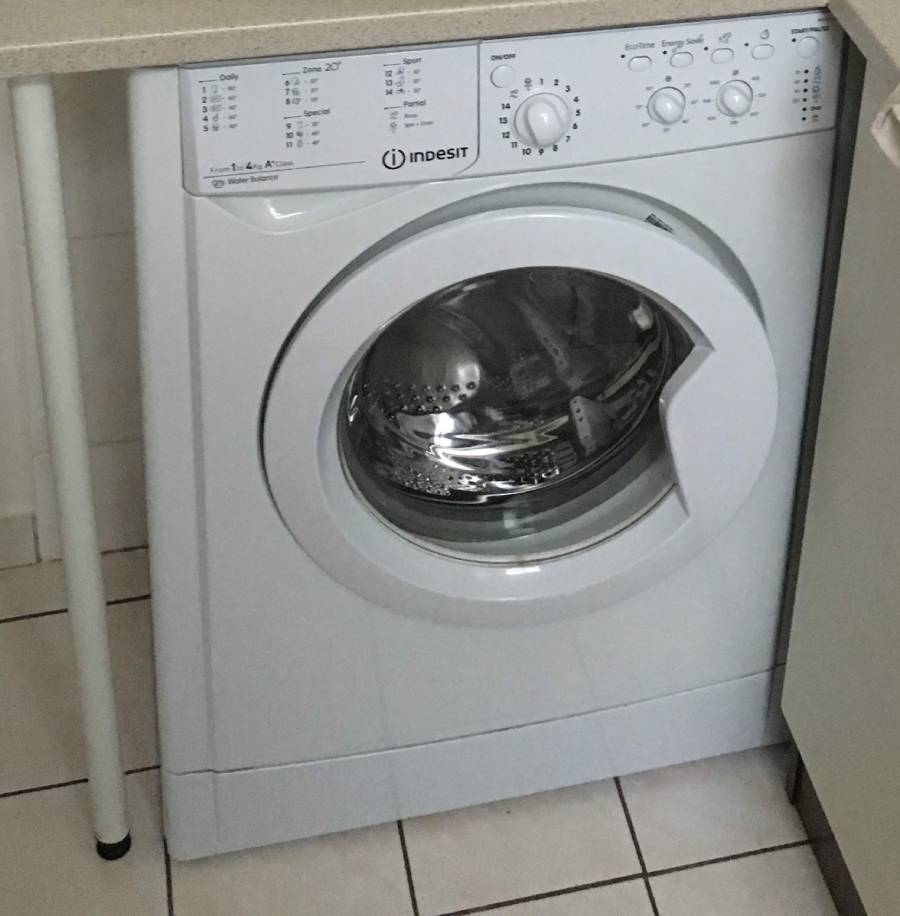
What are the main advantages of Indesit washing machines?
Indesit washing machines offer the following advantages compared to other brands.
- Higher user ratings: Indesit washing machines have an average user rating of 8, slightly above the market average of 8.1.
- Lower price: On average, Indesit washing machines cost £110 less than the market average (£270 vs £380).
- Faster washing programs: Indesit washing machines offer 4-6 washing programs lasting under an hour, compared to 1-3 offered by most other brands.
- Number of washing programs: Indesit washing machines have a similar number of washing programs to most other brands. Some models also feature a self-cleaning function.
- Additional washing features: Many Indesit washing machines include features such as anti-stain function, Push&Go, intensive function, extra rinse, quick wash, and energy-saving Energy Saver mode.
- Advanced features: All Indesit washing machines include a foam control system, load balancing system, laundry detection system (Water Balance Plus), and delay start option.
- Inverter motor: Some Indesit washing machines come equipped with an inverter motor.
What are the main disadvantages of Indesit washing machines?
Indesit washing machines have the following disadvantages compared to other brands.
- Less popular: Indesit washing machines are slightly less popular than most other brands.
- Lower capacity: Indesit washing machines have a lower capacity than the market average (7 kg vs 8 kg) and a smaller drum volume (49 L vs 58 L).
- Higher energy consumption: Indesit washing machines consume more energy (65.5 kWh per 100 cycles) than the market average (55 kWh) and do not offer models with an energy efficiency class A (whereas 39.2% of washing machines on the market are class A).
- Higher water consumption: Indesit washing machines use slightly more water per cycle than the market average (47 L vs 46 L).
- Narrower spin speed range: Indesit washing machines have a lower maximum spin speed (1200 RPM vs 1400 RPM), and most do not reach the minimum spin speed of 400 RPM (only 33% vs 67% of washing machines on the market) needed for very delicate fabrics.
- Higher noise levels: Indesit washing machines are noisier during spin cycles (76 dB vs 75 dB market average) and washing cycles (57 dB vs 53 dB) compared to the market average.
- Lack of specialized cycles: Indesit washing machines lack cycles such as Shirts, Hygiene, Anti-Allergy, and Baby Care; very few include a Jeans cycle. All these cycles are common in other brands.
- Missing many features: Indesit washing machines do not include AquaStop system, overflow protection, pre-mix technology, automatic dosing system, automatic drawer cleaning, steam technology, memory function, smart diagnosis function, Wi-Fi connectivity, or AI technology. These features are common in other brands.
- Unclear design: It is not specified whether Indesit washing machines have an anti-vibration design or a special drum design.
- Lack of display: Many Indesit washing machines do not feature a display.
- Shorter warranty: Indesit offers a 2-year motor warranty, while most other brands offer warranties between 5 and 10 years.
Who manufactures Indesit washing machines?
Indesit washing machines are currently produced under the joint ownership of Whirlpool Corporation and the Turkish company Arçelik. This agreement was reached after Whirlpool acquired 60% of Indesit in 2014 for €758 million, becoming the majority shareholder. In 2023, Whirlpool and Arçelik merged their operations in the European appliance sector, with Arçelik holding 75% of the shares and Whirlpool 25%. The merger created a conglomerate in the European appliance market that includes brands like Indesit, Hotpoint, Beko, Grundig, and others.
Indesit was founded in 1975 by Vittorio Merloni as Merloni Elettrodomestici SpA, becoming one of Europe’s leading appliance manufacturers. In 1987, it acquired the Indesit brand, and in 2005, it was rebranded as Indesit Company. The company expanded its portfolio by acquiring the Russian manufacturer Stinol and Philco in 2000.
Indesit washing machines are primarily manufactured in Italy, with factories in Fabriano, Caserta, and Comunanza, as well as sites in the UK, Poland, Russia, and Turkey.
What are the different series of Indesit washing machines?
The different series of Indesit washing machines are as follows.
- Ecotime Series: These washing machines include a laundry detection system (Water Balance Plus), foam control, and load balancing. They feature a quick wash function (Eco Time), an energy-saving function, and some models offer an extra rinse and a "Sports Shoes" program. However, they lack functions such as rinse hold, anti-crease, and steam technology. They do not have a display or a time remaining indicator. The energy class ranges from B to E, with a capacity of 7 kg and typically 16 washing programs.
- My Time Series: Featuring 6 to 8 quick programs, they include Water Balance Plus, foam control, load balancing, self-cleaning cycle, and anti-stain function. Some models have an inverter motor, extra rinse, Energy Saver, and Sport program. They lack the quick function, rinse hold, anti-crease, and steam technology. The energy class ranges from B to E, with capacities from 7 to 9 kg and 16 washing programs.
- Innex Series: Includes Push&Go technology, a laundry detection system (Water Balance Plus), foam control system, load balancing system, self-cleaning cycle, and anti-stain function. Some models may feature an inverter motor. They lack the quick function, extra rinse function, rinse hold, anti-crease function, and steam technology. The energy class ranges from B to E, with capacities from 6 to 9 kg and 16 washing programs.
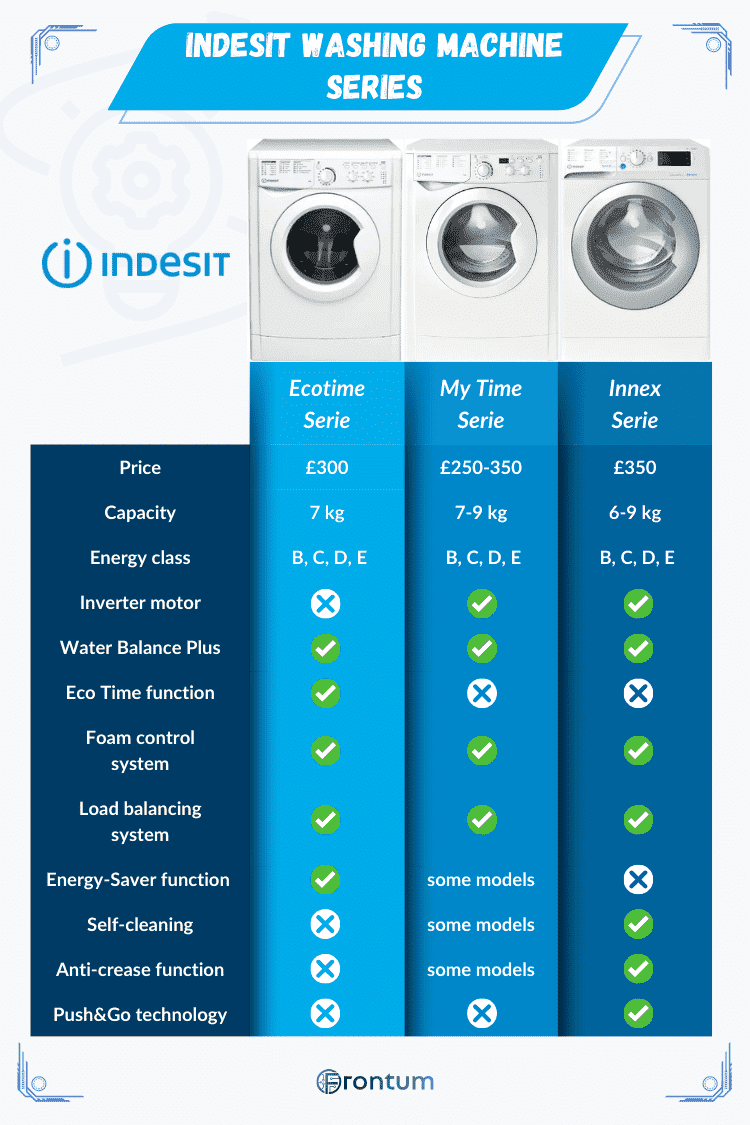
What is the warranty period for Indesit washing machines?
Indesit washing machines include a 2-year legal warranty. By registering the product within 60 days of purchase, you gain access to authorised technicians, original spare parts, and transportation to an authorised service centre if necessary.
After the legal warranty expires, you can purchase repair services with free spare parts for up to 10 years, available at a fixed fee excluding labour costs.
How much do Indesit washing machines cost?
Indesit washing machines are priced between £200 and £400, with an average cost of £270. This places them in position 3 out of 22 brands in the price rankings. The average price of a washing machine across all brands is £380, making Indesit one of the most affordable options.
The Ecotime series includes Indesit’s most affordable models, priced at approximately £300. The My Time and Innex series are the most expensive, with prices reaching up to £350.
The price distribution of Indesit washing machines is shown in the following chart.
[vertical-chart-18435349]
Indesit ranks #13 in the quality-price ratio rankings, with an average quality-price ratio score of 7 points.
(Note: Brands with fewer than 6 products in the database were not included in the ranking.)
What should you consider when choosing the best Indesit washing machine?
When selecting the best Indesit washing machine, consider the loading type, capacity, dimensions, energy consumption, water consumption, spin efficiency, washing noise level, motor type, and the available washing programs and features.
Front-loading or top-loading: Which type of Indesit washing machine is better?
Indesit front-loading and top-loading washing machines have a similar overall score (around 5.7), so there is no clear winner between these two types. About 80% of Indesit washing machines are front-loading.
The chart below shows the distribution of loading types for Indesit washing machines.
[pie-chart-53215279]
The advantages of Indesit front-loading washing machines over top-loading models are as follows.
- Higher capacity: Indesit front-loading washing machines have an average capacity of 8 kg, compared to 6 kg for top-loading models.
- Larger drum volume: Indesit front-loading washing machines have an average drum volume of 53 litres, while top-loading machines average 42 litres.
- Higher maximum spin speed: Indesit front-loading machines achieve an average speed of 1200 rpm, compared to 1000 rpm for top-loading models.
- Better spin efficiency class: Indesit front-loading washing machines generally have a higher spin efficiency class than top-loading models.
- Quieter operation: Indesit front-loading machines operate at a noise level of 57 dB compared to 60 dB for top-loading models.
- Higher spin efficiency class: Indesit front-loading washing machines often achieve spin efficiency class B, while top-loading machines are usually class C.
Indesit top-loading washing machines offer the following advantages over front-loading models.
- Lower price: Indesit top-loading washing machines are, on average, £30 cheaper (£270 for top-loading vs £300 for front-loading).
- Lower water consumption: Indesit top-loading machines use 6 litres less water on average (42 L for top-loading vs 48 L for front-loading).
- Lower energy consumption: Indesit top-loading machines consume 11 kWh less on average (58 kWh for top-loading vs 69 kWh for front-loading).
- Minimum spin speed: Indesit top-loading washing machines can reach a minimum spin speed of 400 rpm, unlike front-loading machines.
- Lighter weight: Indesit top-loading washing machines are 14 kg lighter on average (53 kg for top-loading vs 67 kg for front-loading).
- Ease of loading and unloading: Top-loading washing machines allow laundry to be loaded and unloaded from the top, making the process more convenient.
- Smaller footprint: Indesit top-loading machines take up 0.07 m³ less space on average (0.21 m³ for top-loading vs 0.28 m³ for front-loading).
- Fewer issues with mould and odours: Top-loading washing machines are less prone to mould and odours compared to front-loading models.
What capacities are available for Indesit washing machines?
Indesit washing machines offer capacities ranging from 5 to 10 kg, with 7 kg models making up 29% of the total and 6 kg models comprising 24%. A 7 kg model is ideal for medium to small families, while a 6 kg washing machine suits the needs of singles or couples. It is advisable to ensure the washing machine’s dimensions are compatible with the available space.
The chart below illustrates the distribution of capacities for Indesit washing machines.
[pie-chart-14654820]
Drum volume ranges from 40 to 71 litres, with an average of 49 litres, slightly below the market average of 58 litres.
The depth ranges from 52 to 63 cm, meaning Indesit’s range does not include slim models. If you are looking for a slim washing machine, exploring other brands may be beneficial. The standard width is around 60 cm for front-loading models and 40 cm for top-loading models, aligning with typical market dimensions.
What is the energy efficiency of Indesit washing machines?
Indesit washing machines fall into energy efficiency classes ranging from B to F. 18% are class B, 35% are class C, 24% are class D, 6% are class E, and 12% are class F. No Indesit washing machines fall into class A or G. Indesit machines generally have lower energy efficiency classes compared to most other brands.
The energy efficiency class distribution of Indesit washing machines is illustrated in the chart below.
[pie-chart-28980844]
Indesit washing machines consume between 66 and 82 kWh, with an average of 65 kWh, ranking 16th out of 22 brands for energy consumption. The average washing machine on the market consumes about 55 kWh per 100 cycles. Class A washing machines consume less than 49 kWh per 100 cycles, while class B machines consume less than 55 kWh, although this may vary slightly depending on capacity.
For water consumption, Indesit washing machines use between 41 and 52 litres per cycle, with an average of 47 litres, ranking 10th out of 22 brands for water usage.
What is the spin efficiency of Indesit washing machines?
Indesit washing machines typically have a spin efficiency class of 65% or 35%. In comparison, most washing machines on the market are class B (85%), followed by class C (10%) and class A (5%).
The distribution of spin efficiency classes among Indesit washing machines is shown in the chart below.
[pie-chart-70229499]
The spin efficiency class reflects the machine’s ability to remove water from laundry after the wash cycle. It is closely related to the machine’s maximum spin speed. Higher spin speeds result in better water extraction, meaning clothes come out drier.
Indesit washing machines have maximum spin speeds ranging from 1000 to 1400 rpm. The most common maximum spin speed for these machines is 41% rpm, followed by 35% rpm. The market average is higher, with 60% of washing machines reaching 1400 rpm and 22% reaching 1200 rpm.
If you frequently wash delicate fabrics, the minimum spin speed is also essential. Lower spin speeds help protect delicate fabrics from damage. Indesit washing machines have minimum spin speeds ranging from 400 to 800 rpm. Approximately 47% of Indesit machines can spin at 400 rpm.
How noisy are Indesit washing machines?
Indesit washing machines have spin noise levels ranging from 71 dB to 80 dB, with an average of 76 dB. This places them 13th for spin noise levels among 22 brands. On average, they are slightly noisier than other brands (the market average is 75 dB). Spin noise is the most significant when measuring a washing machine's noise, as it represents the loudest part of the washing process.
Indesit washing machines have noise emission classes ranging from A to C. Most (59%) fall into class B (73-76 dB), followed by 35% in class C (77-80 dB) and 6% in class A (below 73 dB). By comparison, 37% of all washing machines are class A, 35% are class B, 26% are class C, and only 3% are class D.
The chart below shows the distribution of spin noise levels among Indesit washing machines.
[vertical-chart-23654008]
Wash noise levels, while lower, are still relevant. Indesit washing machines have wash noise levels ranging from 50 to 60 dB, with an average of 57 dB, above the market average of 53 dB.
Noise levels are important if you use the washing machine in a quiet environment or during night hours. Spin noise is the loudest, so consider this factor if noise is a concern.
How many washing programs do Indesit washing machines offer?
Indesit washing machines typically come with 16 washing programs, in line with most other brands. Common programs include Cotton 59', Synthetics 59', Eco 40-60, 20°C, Whites, Delicates, Sports, Mixed 30', Express 20’, Mixed Colours 59', Whites, and Wool (tested and approved by Woolmark).
Some advanced models, like those from the Innex series, add specific programs such as Anti-Odour, designed to remove unpleasant smells from synthetic fabrics, and Colours, a 30°C cycle that preserves colours.
The Eco Time series is tailored for sports-related stains and includes three dedicated cycles: Intensive Sports, Light Sports, and Sports Shoes. The Innex series and some My Time models also include the AutoClean cycle.
Indesit top-loading models feature the Turn & Go cycle, ideal for everyday washing of lightly soiled cotton or synthetic fabrics. This cycle washes at low temperatures and spins at maximum speed.
However, you won’t find an Indesit washing machine with a Shirts cycle, available in 42% of washing machines in general, nor with Hygiene (59% in general), Anti-Allergy (68%), or Baby Care (39%) cycles. Only 8% of Indesit washing machines include a Jeans cycle, compared to 45% of washing machines overall.
The chart below shows the distribution of the number of washing programs available in Indesit washing machines.
[vertical-chart-89522798]
The ECO cycle on Indesit washing machines lasts between 185 and 235 minutes, averaging 207.5 minutes, which is shorter than the market average of 218 minutes.
Indesit washing machines often include the following features to customise cycles based on your needs.
- Anti-stain function (Innex series, built-in models, and some My Time models): Allows you to select the type of stain (food, work, or outdoor) to optimise the removal of specific stains.
- Push&Go/Push&Wash (Innex series and built-in models): Removes over 20 types of common stains in 45 minutes with a single button press.
- Intensive Wash/Extra Wash (top-loading models and some My Time models): Extends the cycle and adjusts parameters to deeply clean heavily soiled items.
- Extra rinse function: Adds an additional rinse to the cycle for a thorough clean.
- Energy Saver (Eco Time series, top-loading models, and some My Time models): Uses cold water and enhanced washing action to clean without heating the water.
Only a few Indesit washing machines offer the Easy Iron anti-crease function, which reduces creases by adjusting cycles and spin speeds, and the quick wash function. None include the Water+ function, soak function, silent function, or wash assist function.
What are the common features of Indesit washing machines?
Indesit washing machines usually include 5 to 7 functions, fewer than the market average of 10 functions.
The chart below shows the distribution of the number of functions among Indesit washing machines.
[vertical-chart-84649339]
Most models feature a foam control system, load balancing system, Water Balance Plus function (which adjusts water usage according to the cycle), and a delay start option (ranging from 9 to 12 hours depending on the model).
Some models from the Innex and My Time series are equipped with an inverter motor, improving energy efficiency and reducing vibrations.
However, Indesit washing machines lack many features common to other brands, such as the Aqua Stop system (32% of washing machines), overflow protection, pre-mix technology (24%), automatic dosing system (10%), automatic drawer cleaning (12%), steam technology (57%), memory function (36%), smart diagnosis function (43%), Wi-Fi connectivity (23%), and AI technology (11%). Additionally, many Indesit models lack a display, whereas 94% of washing machines on the market are equipped with one.
There is no clear information regarding the presence of an anti-vibration design or a special drum design for delicate fabrics.

